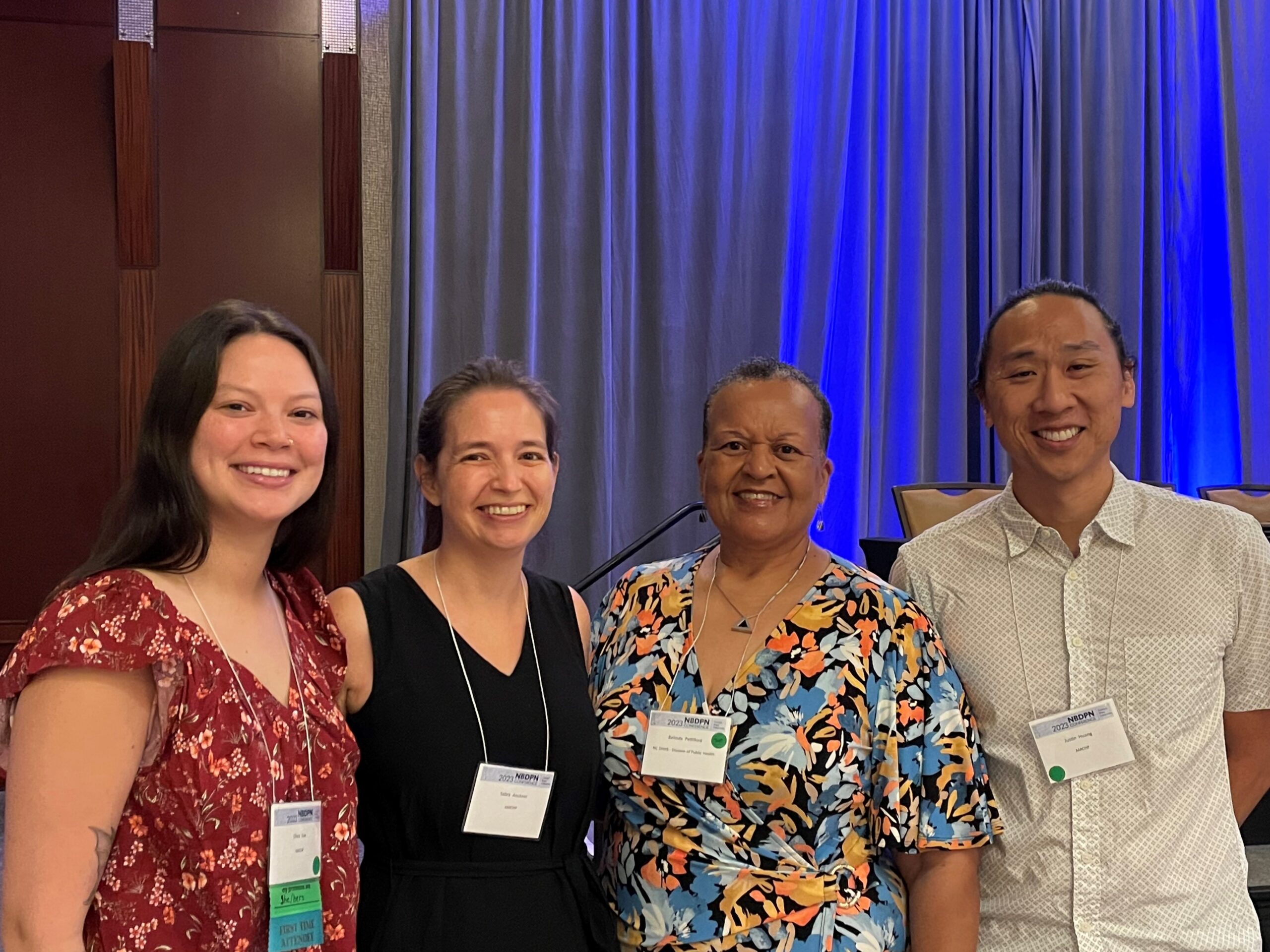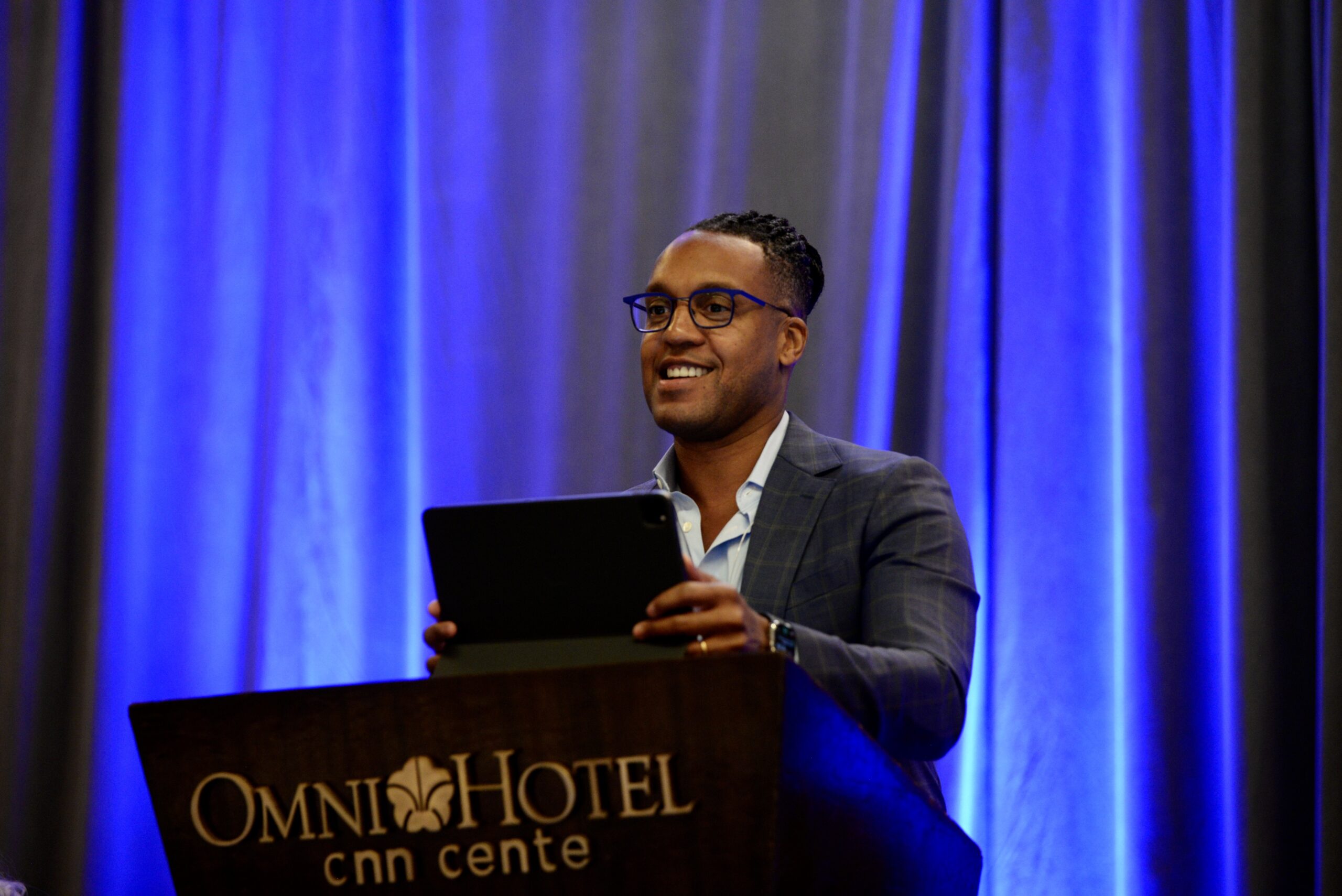By Justin Huang, Senior Program Analyst, Clinical & Community Collaboration
Contributor: Eden Desta, Senior Communications Analyst
AMCHP commemorates National Birth Defects Awareness Month this January by celebrating the launch of our new Referral to Service Activities Framework for Birth Defects Surveillance Programs. This work is the culmination of a 3-year project with our partners from the National Birth Defects Prevention Network (NBDPN) and the Centers for Disease Control and Prevention’s National Center on Birth Defects and Developmental Disabilities (CDC NCBDDD). While public awareness campaigns for birth defects are often focused on specific conditions, AMCHP is raising awareness of Birth Defects Surveillance Programs (BDSPs) themselves.
In December 2024, we hosted a webinar to launch the Referral to Service Activities Framework for BDSPs. While the framework tool encourages individual programs to map out their local referrals systems, much of the work lies in building relationships and creating a shared understanding of how activities across agencies can impact referrals processes. During this Birth Defects Awareness Month, AMCHP encourages our Title V members and partners to explore the content and resources below and consider how you, your local BDSP, and other partners can work together to improve outcomes for the families that you serve.
“I am pleased that AMCHP has created an online framework of referral resources for birth defects surveillance programs. As a person who has been impacted by a birth difference/variation, I am really interested in efforts to continue to create awareness and to help provide resources for birth defects surveillance programs because these efforts ultimately support families.”
— Marcus Allen, AMCHP Board President (2024-2025)
A Partnership for Progress
AMCHP’s partnership with NBDPN began in early 2022, with our team providing administrative support to NBDPN’s board and 15 committees and workgroups; cataloging Standard Operating Procedures and initiating strategic planning efforts within the organization; and co-organizing and co-coordinating the 2023 NBDPN Conference in Atlanta, Georgia. We are proud to have played a role in NBDPN’s successful transition from an all-volunteer organization to securing external funding streams, onboarding an association management company, and most recently, rebranding and launching their new website.

AMCHP Staff Members and Board President (2022-2023) at NBDPN 2023

AMCHP CEO Terrance E. Moore Speaking at NBDPN 2023
Insights from the Field
In addition to administrative support, subject matter experts from our team conducted an environmental scan survey among Title V programs and BDSPs to better understand how each agency viewed their collaborative roles regarding their birth defects work. In the survey, along with qualitative responses from key informant and focus group interviews, BDSP and Title V program staff identified various topics of interest that informed a series of virtual roundtables that we led throughout 2023, many highlighting different approaches programs around the country take to this work. Recordings of each are available on our resource page.
Although 57% of survey respondents said they engage in referrals activities, several voices in the roundtables mentioned many barriers to entry for their programs. These divergent accounts highlight a gap in the utilization of BDSP data to ensure that children born with birth defects and their families can access the services they need.
Crossing the Finish Line: A Framework for Action
From the surveys, interviews, and roundtables, we identified a common recommendation: to strategically co-plan how data can inform actions. This includes supporting specific data-to-action collaborations; increasing information and data sharing; and fostering frequent and intentional collaboration. With extensive coordination amongst our project partners and multiple revisions of the framework tool, the final Referral to Service Activities Framework for BDSPs reframes referral to service activities through a Social Determinants of Health perspective.
Words like share, co-plan, and collaborate all speak to a need for partnership, but what does engaging in referral to services actually entail for BDSPs?
By working through the framework tool BDSP managers and staff are encouraged to:
- Develop an understanding of the partners within their local services landscape
- Identify where their efforts best fit into the existing structures
- Consider how their activities might impact Social Determinants of Health
- Ensure families are actively included throughout the process
While the framework tool has been developed as a guide for BDSPs to engage in referrals to service activities, the progress and momentum of improving referrals systems can be impeded or enhanced by each of the agencies that work in these spaces. We hope that in your exploration of these resources, opportunities for partnership are revealed and new collaborations are pursued, both with your local Birth Defects Surveillance Programs and other partners. Additionally, if your programs have identified policies or practices that are building collaborative momentum in the referral to services space, please share them with us at ccc@amchp.org so we can highlight them on the landing page!
Acknowledgments
We are grateful to the many dedicated AMCHP teams whose hard work, expertise, and collaboration made this project a success, and whose collective efforts have been invaluable in advancing this important work.
- Child and Adolescent Health team
- Clinical and Community Collaboration team
- Communications team
- Epidemiology, Evaluation, and Metrics team
We especially want to honor the contributions that the late Dr. Cheryl Clark made to this project, which exemplified her lifelong commitment to improving services for all children and families.
This project was supported by the Centers for Disease Control & Prevention of the US Department of Health & Human Services (HHS) as part of a financial assistance award totaling $500,000 with 100 percent funded by CDC/HHS. The contents are those of the author(s) and do not necessarily represent the official views of, nor an endorsement, by CDC/HHS, or the US Government.
